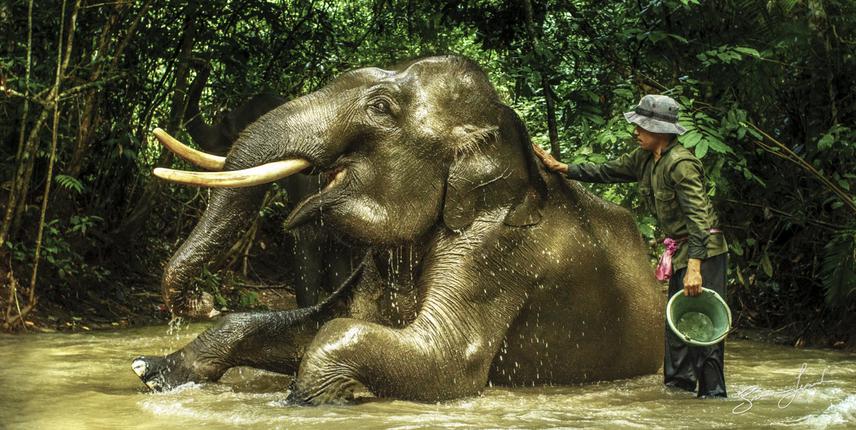Bruce Levick
The project will provide a better understanding about the biodiversity of the 8.000 hectare large conservation forest area in Seblat, north Bengkulu. Providing data in the form of the remaining populations of wildlife.

With support from conservation NGOs, the CRU (Conservation Response Unit) in the Seblat forest conservation area was established by the Bengkulu Provincial Conservation Agency (BKSDA) in 2004 to conduct forest patrols, law enforcement, Human Wildlife Conflict management and monitor biodiversity to ensure sufficient protection of this area.
The key outcomes of this project are to provide the Conservation Response Units a better understanding of the locations of wildlife such as elephants in relation to local communities surrounding the protected Seblat forest. This will help the CRU patrol units plot more realistic courses to prevent human/wildlife conflicts in a more precise manner and with a better understanding of the movement of the wildlife. Understanding wildlife movement will also better police poaching from the local villagers.
A total number of 8 cameras of the Bushnell brand will be purchased from Jakarta. The project coordinator and the CRU team will set up cameras and data collection twice per month during their regular elephant patrols in and around the Seblat protected forest area. These patrols usually last for 5 to 10 days. After data collection cameras will be reset in the same or new locations. The patrols will be done by foot and on elephant back using trained elephants providing a maximum of mobility, access, and easy transport in a tropical forest environment.
The data will be invaluable in recording numbers of critically endangered elephants and other endangered wildlife still living in the area. Accurate data about the biodiversity of the Seblat forest are very important for the government agencies to justify and maintain this forest’s legal protection status in order to protect it for the long term from exploitation for mining and plantations.
The capacity will be built to use camera trapping as an additional tool for biodiversity monitoring by the staff of BKSDA and teams from the Veterinary Society for Sumatran Wildlife Conservation.